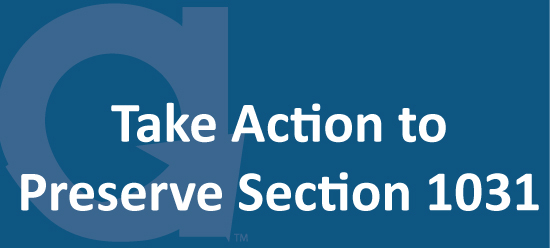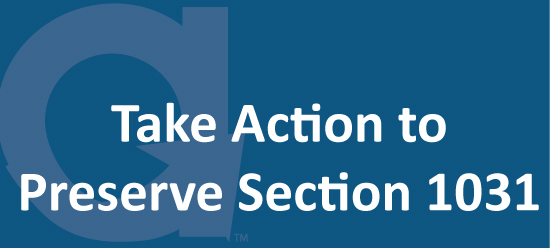Most taxpayers wish to defer tax in full when completing a 1031 exchange. In order to accomplish this, one simple rule of thumb is that the taxpayer must trade “up or equal” in value. Perhaps a better way to look at this is to make sure the net proceeds of sale (i.e. the amount held in the exchange account) are used in full and the taxpayer puts on equal or greater debt on the new property compared to the amount paid off at the time of closing on the sale. Another expression sometimes used is that the taxpayer should have “no net debt relief.” Any cash taken out at closing and any debt that is not covered could be subject to:
Capital gains tax
Recapture of depreciation
State taxes
Net Investment Income Tax (also known as Affordable Care Act tax)
Oftentimes with exchange transactions, taxpayers wish to receive some cash out for various reasons. Any cash generated at the time of the sale that is not reinvested is referred to as “boot” and the amount is taxable. There are a couple of possible ways to gain access to that cash while still receiving full tax deferral.
Refinancing Relinquished Property Prior to Closing
For an owner of real estate, not engaging in a 1031 exchange, who wishes to refinance it at any time, any cash proceeds received are not subject to tax. However, in many cases, a taxpayer looking ahead to an upcoming exchange of his property may find himself with a high amount of equity and relatively low (or no) debt, this will require him to reinvest all the cash (and match debt). The taxpayer may wish to finance or refinance the property pulling cash out and later go to closing with higher debt and lower cash equity, as a result his reinvestment requirements for the replacement exchange property are suddenly very different. Essentially he walks away from the transaction with the debt on the property paid off, cash in his pocket, higher debt and lower equity in his replacement property and total tax referral The problem with this approach is that the IRS does not like it. It is almost like cheating. Essentially it is substituting new debt for cash taken out. Since the taxpayer cannot take out cash on a tax deferred basis at closing, essentially doing the same thing just prior to the closing should be disallowed as well. The IRS does not look favorably upon a step transaction, which basically means that if something is not allowed to be done in a direct fashion (taking out cash at closing), by taking a few additional steps to avoid the application of the rule, is not allowed either.
There are a couple of facts which may improve the IRS position on these refinance transactions. One of these is the impression that the refinance is not done in anticipation of the exchange of the property. In general, the more time that elapses between any cash out refinance and the eventual sale of the property is in the taxpayer’s best interest There is no bright line safe harbor for this, but at the very least if it is done somewhat prior to listing the property, that fact would be helpful. The other consideration that comes up a lot in IRS cases is the presence of independent business reasons for the refinance. Maybe the taxpayer’s business is having cash flow problems. Maybe the property needs a new roof, etc. To the extent that the refinance is done for other reasons and not solely to effect a favorable change to the debt and equity numbers, a taxpayer should be able to refinance even while contemplating a subsequent 1031 exchange of the property.
Refinancing Replacement Property After Closing
As was stated above, in the absence of any exchange transaction, a taxpayer who chooses to do a cash out refinance does not trigger any tax. The question then is whether that principle applies to refinancing to pull equity out after the acquisition of the replacement property is complete. Is that taxpayer in any different position from one who is doing a cash out refinance for property held but not part of an exchange transaction? Probably not and accordingly, the IRS does not seem to disallow these post-exchange refinancings. The American Bar Association Section on Taxation addressed these issues, and others, as part of an open report it prepared after the exchange rules came out. The committee concluded that in the case of pre-exchange refinance the taxpayer is no longer obligated to pay the debt once the loan is paid off at the closing, while still retaining the cash. In a post-exchange transaction, the taxpayer retains the cash but has an outstanding obligation to repay the debt. The committee concluded:
“The key to the distinction between pre-and post-exchange refinancings is that the taxpayer will remain responsible for repaying a post-exchange replacement property refinancing following completion of the exchange whereas the taxpayer by definition will be relieved from the liability for pre-exchange relinquished property refinancing upon transfer of the relinquished property. A fundamental reason why borrowing money does not create income is that the money has to be repaid and therefore does not constitute a net increase in wealth.”
Consistent with this reasoning, one noted author used the term “nanosecond” to indicate how long a taxpayer needs to wait before entering into a cash out refinance on the replacement property. In other words, once a taxpayer owns the replacement property and refinances it incurring a repayment obligation, that taxpayer is in no different position than anyone else owning property and refinancing it. Most authors take a similar position, but caution not to have the cash out refinance done concurrently with the acquisition of the property nor to have it prearranged prior to the purchase of the property. Best practice would be to start the cash out refinance process any time after the replacement property acquisition.
Summary of Cash Out Refinance in 1031 Exchange
Taxpayers sometimes wish to generate some cash on or around the time of selling relinquished property as the first leg of an exchange. Any sums paid to the taxpayer at closing are subject to taxation. As an alternative, a taxpayer may wish to refinance the relinquished property before the exchange or refinance the replacement property after the exchange. In the absence of mitigating factors, refinancing the relinquished property is generally discouraged, however refinancing the replacement property should not result in any tax issues and should not jeopardize the tax deferral on the transaction. The primary logic for these positions is that with the former, the taxpayer is able to pay off the loan debt at the closing, whereas in the second alternative the taxpayer retains the debt obligation as an offset to the receipt of cash.
https://cta-redirect.hubspot.com/cta/redirect/6205670/54985636-c73e-4c3… alt=”Forward Exchanges Download” class=”hs-cta-img” height=”150″ id=”hs-cta-img-54985636-c73e-4c3d-9d46-a49349f9bf90″ src=”https://no-cache.hubspot.com/cta/default/6205670/54985636-c73e-4c3d-9d4…; style=”border-width:0px;” width=”1320″ />https://js.hscta.net/cta/current.js”> hbspt.cta.load(6205670, ‘54985636-c73e-4c3d-9d46-a49349f9bf90’, {});
Updated 3/21/2022.







